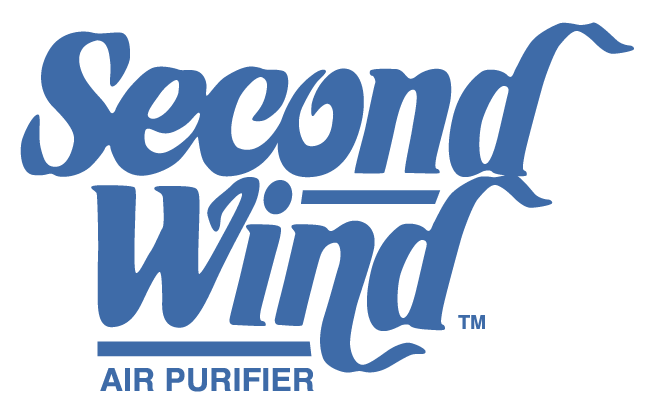Source: MNN.com
Come April in most parts of the country, Mother Nature really pulls out all the stops in her attempt to dazzle us with a spectacular showing of beauty: the blooms, the buds, the birds, the brilliant beams of sunshine, the signs of life-affirming rebirth and rejuvenation around every just-recently-thawed-out-corner. But along with the myriad splendors of spring comes a most undesirable – and at times even miserable – side effect: sneezing, snorting, sniffling, wheezing, coughing, itching, and a nose that drips like that temperamental faucet in the bathroom that you’ve been meaning to fix.
Each spring, approximately 35 million Americans fall victim to hay fever (seasonal allergic rhinitis), an immune system-borne condition brought on by elevated pollen counts. Of course, the culprit behind the abundance of teeny-tiny airborne allergens known as pollen are the trees, grasses and weeds that are just doing what nature intended: fertilizing other plants. Still, it’s hard to give the natural pollination process a break when you find yourself spending a small fortune on a variety of antihistamines.
For those suffering from severe springtime allergies, retreating inside is a common escape from the histamine-related horrors unleashed by Mother Nature. While seeking refuge indoors may provide some relief, microscopic outdoor allergens do have a sneaky way of finding their way inside of your home where they join common year-round allergy and asthma triggers such as pet dander, mold and dust mites.
The non-hair-related horrors of humidity: Sticky, sweltering weather is one thing, but for allergy suffers a humid indoor environment is a whole other uncomfortable ball game. Common household allergens such as mold and moisture-absorbing dust mites thrive in humid environments so the best line of defense is obviously paying mind to the humidity levels of your home. Experts recommend keeping a home’s relative humidity levels at 50 percent or lower while being mindful of not completely eliminating humidity from your home as that can actual make allergies worse and introduce an additional set of health woes. A home’s humidity levels, read through a hygrometer, can be regulated through the use of dehumidifiers and, during the warmer months, air conditioning. Also key: Cleaning mold prone-surfaces particularly in the bathroom and kitchen; patching up leaks and fixing leaky faucets; and paying special mind to dust mite-friendly surfaces objects such as carpets, bedding and upholstered furniture. And although they can help to improve indoor air quality by absorbing toxins, it also helps to take it easy on the houseplants as they introduce humidity into your home.
Doormat combat: While their primary function may be to trap mud, welcome guests and inject a bit of decorative flair to your entryway, doormats are also a not-so-secret weapon in preventing potential allergens, be it pollen or garden pesticides, from hitching a ride into your home on the bottom of your shoes. Get in the habit of giving those shoes a thorough wiping before entering across the threshold and ensure that the mat itself, preferably a high-quality and abrasive one, is cleaned frequently. That being said, it’s also a wise idea to remove shoes once inside so that whatever unsavories remaining on the bottom of your shoes are not tracked throughout the house.
Resist the urge to throw open the you-know-whats: Like starting in a bit too early in the season with the open-toe shoes, it’s a common fair-weather impulse to throw open the windows and replace the stuffy, stagnant air of winter with the fresh, invigorating air of spring. A deep, dramatic exhale frequently follows.
But not so fast: While there’s nothing quite as liberating as finally being able to air out your home via a cracked window or two, it’s also an open invitation for pollen and indoor air quality-compromising pollutants to come on in and stay for a while. Dry, breezy days are particularly prime for allergen home invasions. So no matter how hard it may be, those suffering from seasonal allergies should keep those windows and doors tightly shut. There is hope, however, in the form of allergen particle-filtering window screens that allow you to enjoy fresh air sans pollen, dust, dirt and whatever else may enter your home along with that delightful spring breeze.
Suck it up: Is your trusty vacuum cleaner about ready to bite the dust instead of suck it up? Use this unfortunate occurrence as an opportunity to invest in a vacuum that harnesses HEPA (high efficiency particulate air) technology. Although they’re great at removing clumps of dirt, traditional vacuums with standard filters also do a bang-up job of recirculating allergens (pollen, animal dander and dust mite feces for example) around your house. This, of course, is bad news for those suffering from asthma and allergies.
Vacuums with HEPA filters, however, remove 99.97 percent of allergens of .3 microns. In other words, they suck up pretty much everything. For improved indoor air quality, The Asthma and Allergy Foundation of America recommends going to town with a HEPA vacuum once or twice weekly.
Forgo Fido: It’s tough saying this but there’s really no way around it: Those who are allergic to pet dander, no matter how much they adore animals, should not introduce a living creature with fur or feathers into their homes. There are some options, however, for animal lovers suffering from more mild sensitivities to pet dander: Adopting/purchasing a “hypoallergenic” (less allergenic) dog; limiting a pet’s time spent indoors (not always an option in many circumstances particularly for those living in cities); prohibiting a pet from entering a home’s bedrooms and ensuring that they keep off of upholstered furniture (also not always possible in some circumstances); and maintaining a super-vigilant cleaning/vacuuming schedule along with using an air purifier. Or you could just settle for a lizard. Whatever the case, those with known severe animal dander allergies should not “try out” a pet whether it be a cat, dog or adorable little guinea pig as it’s not only dangerous on the health front but could result in a sad outcome for everyone involved.
Curbing the “C” word: In addition to screaming, panicking and running in the other direction, cockroaches can also trigger allergies and asthma in humans (via the proteins found in their feces). Like with much smaller dust mites, the best preventative measures to take when dealing with cockroach allergies are keeping a spic n’ span home and regulating humidity (unlike mites, cockroaches do drink water). For anyone who has dealt with the terrifying little monsters before, not leaving food and trash out is key. And in the case of infestations, bringing in the big guns – pest remediation experts – is generally the wisest idea. Boric acid can also be used in ongoing control.
Keep the butts out: Not much explanation needed here: Don’t smoke – or permit anyone else – to smoke inside of your home. Chemical-laden secondhand smoke can severely compromise indoor air quality and is linked to asthma along with a variety of other health concerns in which developing children are particularly susceptible. If Great Aunt Florence is accustomed to enjoying a post-dinner puff in the living room during her annual visit, it’s time to put that ashtray into retirement and send her outside.








